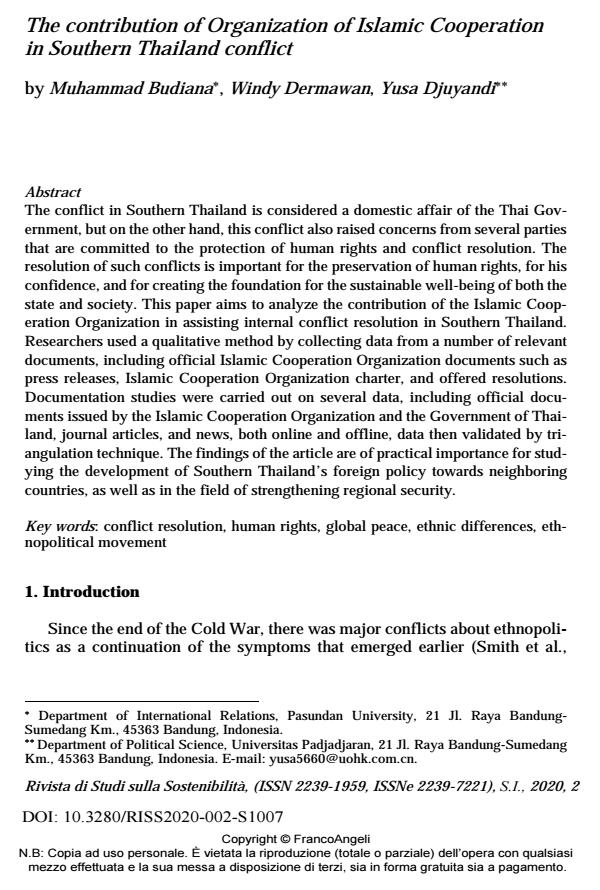The contribution of Organization of Islamic Cooperation in Southern Thailand conflict
Titolo Rivista RIVISTA DI STUDI SULLA SOSTENIBILITA'
Autori/Curatori Muhammad Budiana, Windy Dermawan, Yusa Djuyandi
Anno di pubblicazione 2021 Fascicolo 2020/2 suppl.
Lingua Inglese Numero pagine 15 P. 81-95 Dimensione file 108 KB
DOI 10.3280/RISS2020-002-S1007
Il DOI è il codice a barre della proprietà intellettuale: per saperne di più
clicca qui
Qui sotto puoi vedere in anteprima la prima pagina di questo articolo.
Se questo articolo ti interessa, lo puoi acquistare (e scaricare in formato pdf) seguendo le facili indicazioni per acquistare il download credit. Acquista Download Credits per scaricare questo Articolo in formato PDF

FrancoAngeli è membro della Publishers International Linking Association, Inc (PILA)associazione indipendente e non profit per facilitare (attraverso i servizi tecnologici implementati da CrossRef.org) l’accesso degli studiosi ai contenuti digitali nelle pubblicazioni professionali e scientifiche
The conflict in Southern Thailand is considered a domestic affair of the Thai Gov-ernment, but on the other hand, this conflict also raised concerns from several par-ties that are committed to the protection of human rights and conflict resolution. The resolution of such conflicts is important for the preservation of human rights, for his confidence, and for creating the foundation for the sustainable well-being of both the state and society. This paper aims to analyze the contribution of the Islamic Cooperation Organization in assisting internal conflict resolution in South-ern Thailand. Researchers used a qualitative method by collecting data from a number of relevant documents, including official Islamic Cooperation Organiza-tion documents such as press releases, Islamic Cooperation Organization charter, and offered resolutions. Documentation studies were carried out on several data, including official documents issued by the Islamic Cooperation Organization and the Government of Thailand, journal articles, and news, both online and offline, data then validated by triangulation technique. The findings of the article are of practical importance for studying the development of Southern Thailand’s foreign policy towards neighboring countries, as well as in the field of strengthening re-gional security.
Parole chiave:Conflict resolution, human rights, global peace, ethnic differences, ethnopolitical movement
Muhammad Budiana, Windy Dermawan, Yusa Djuyandi, The contribution of Organization of Islamic Cooperation in Southern Thailand conflict in "RIVISTA DI STUDI SULLA SOSTENIBILITA'" 2 suppl./2020, pp 81-95, DOI: 10.3280/RISS2020-002-S1007